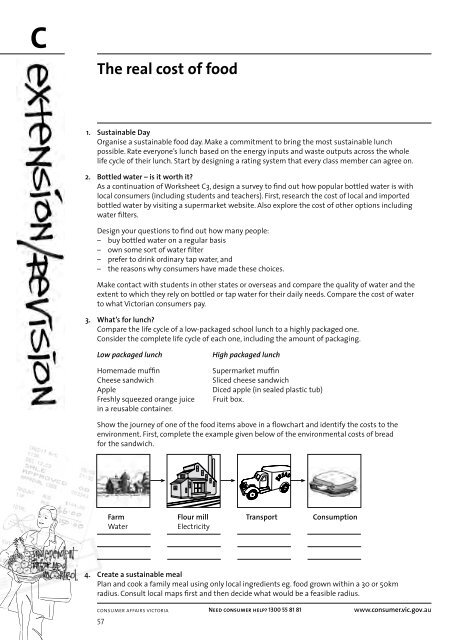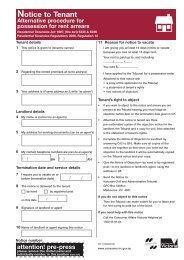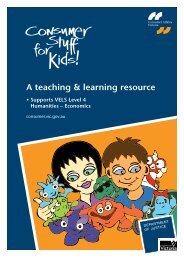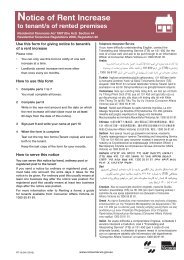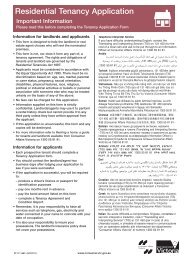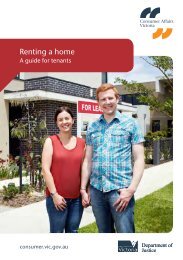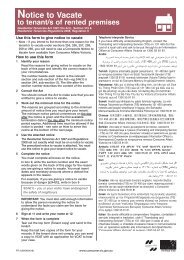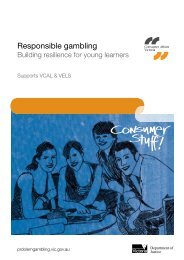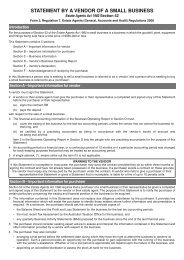A resource for teaching and learning about consuming planet earth
A resource for teaching and learning about consuming planet earth
A resource for teaching and learning about consuming planet earth
Create successful ePaper yourself
Turn your PDF publications into a flip-book with our unique Google optimized e-Paper software.
CONTINUED<br />
C<br />
The real cost of food<br />
1. Sustainable Day<br />
Organise a sustainable food day. Make a commitment to bring the most sustainable lunch<br />
possible. Rate everyone’s lunch based on the energy inputs <strong>and</strong> waste outputs across the whole<br />
life cycle of their lunch. Start by designing a rating system that every class member can agree on.<br />
2. Bottled water – is it worth it?<br />
As a continuation of Worksheet C3, design a survey to find out how popular bottled water is with<br />
local consumers (including students <strong>and</strong> teachers). First, research the cost of local <strong>and</strong> imported<br />
bottled water by visiting a supermarket website. Also explore the cost of other options including<br />
water filters.<br />
Design your questions to find out how many people:<br />
– buy bottled water on a regular basis<br />
– own some sort of water filter<br />
– prefer to drink ordinary tap water, <strong>and</strong><br />
– the reasons why consumers have made these choices.<br />
Make contact with students in other states or overseas <strong>and</strong> compare the quality of water <strong>and</strong> the<br />
extent to which they rely on bottled or tap water <strong>for</strong> their daily needs. Compare the cost of water<br />
to what Victorian consumers pay.<br />
3. What’s <strong>for</strong> lunch?<br />
Compare the life cycle of a low-packaged school lunch to a highly packaged one.<br />
Consider the complete life cycle of each one, including the amount of packaging.<br />
Low packaged lunch High packaged lunch<br />
Homemade muffin Supermarket muffin<br />
Cheese s<strong>and</strong>wich Sliced cheese s<strong>and</strong>wich<br />
Apple Diced apple (in sealed plastic tub)<br />
Freshly squeezed orange juice Fruit box.<br />
in a reusable container.<br />
Show the journey of one of the food items above in a flowchart <strong>and</strong> identify the costs to the<br />
environment. First, complete the example given below of the environmental costs of bread<br />
<strong>for</strong> the s<strong>and</strong>wich.<br />
Farm Flour mill Transport Consumption<br />
Water Electricity<br />
4. Create a sustainable meal<br />
Plan <strong>and</strong> cook a family meal using only local ingredients eg. food grown within a 30 or 50km<br />
radius. Consult local maps first <strong>and</strong> then decide what would be a feasible radius.<br />
consumer affairs victoria<br />
57<br />
Need consumer help? 1300 55 81 81 www.consumer.vic.gov.au


